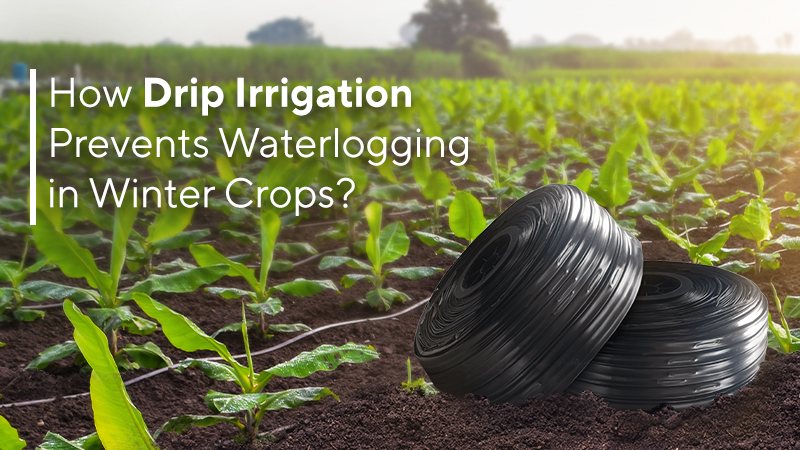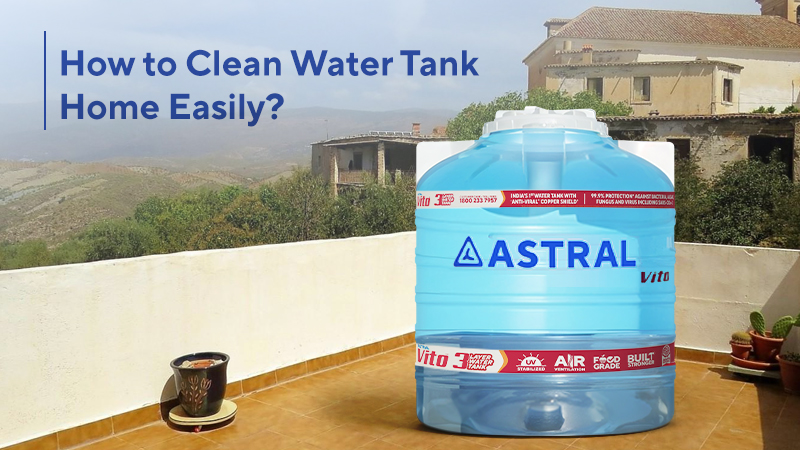
19 Oct 2025
How Does Drip Irrigation Prevent Waterlogging in Winter Crops?
Winter crops like carrots and cabbage grow best in cool weather, but soggy soil can ruin the yield. Cold days slow evaporation and keep the soil wet longer, increasing the chance of root rot and fungal attacks. This makes water management a challenge. Traditional irrigation systems, such as flooding fields or spraying excess water, only add to the problem. Drip irrigation is an ideal solution here. The network of drip irrigation pipes delivers water slowly and directly to plant roots, avoiding oversaturation. It also keeps the ground perfectly balanced and moist but never swampy. Let us break down its smart design and winter-ready features.
How does Drip Irrigation Manage Water Levels During Winter?
Drip irrigation is an advanced irrigation method that slowly and efficiently delivers water directly to the plant roots. It uses a network of drip pipes, tubing, and emitters to deliver water in small, controlled amounts directly to the plant roots. This method is highly effective for managing water levels and preventing overwatering.
1. Monitor Soil Moisture Constantly
Use soil moisture sensors to check how moist the soil is. Winter soils, especially in areas with regular rainfall, can retain moisture for longer periods and do not need frequent irrigation.
2. Opt for Low Discharge Emitters
Low-flow emitters distribute small amounts of water over time to keep the soil moist without oversaturating it.
3. Schedule Irrigation Carefully
Check on weather forecasts. If rain is expected, schedule irrigation later to balance wet and dry soil conditions.
4. Use Mulching
Add a layer of mulch to help regulate soil temperature and complement the drip irrigation system by reducing water runoff and evaporation.
5. Maintain Drainage Systems
Combine drip irrigation pipes with effective drainage systems to prevent standing water in low-lying areas of the field and keep the soil aerated.
Drip irrigation is an ideal solution for managing water in winter, where overwatering can have significant negative effects.
Benefits of Drip Irrigation for Growing Winter Crops
Beyond helping your crops thrive, several benefits of drip irrigation for winter crops:
1. Water Efficiency
It minimises water usage by ensuring only the necessary amount reaches the plants. This is particularly helpful in areas with limited water resources.
2. Targeted Delivery
Delivering water directly to the root zone reduces the risk of moisture accumulating on foliage, which can lead to fungal issues.
3. Cost Savings
Over time, drip systems reduce the expenses associated with water usage, labour, and field maintenance.
4. Improved Soil Health
Drip irrigation minimises soil erosion and nutrient leaching, maintaining robust soil structure and fertility.
5. Higher Yields
By protecting crops from water stress and promoting consistent moisture levels, drip irrigation supports healthier and more productive plants.
With drip pipes in place, you save water, reduce environmental impact, and promote sustainable farming practices.
Choosing the Right Drip Irrigation System for Your Farm
Choosing the right system is as important as understanding the benefits of drip system. A well-designed setup tailored for winter crops can make all the difference in maintaining healthy yield and efficient water use.
The Droplet Drip Irrigation System by Astral Pipes is built to withstand tough farming conditions, particularly during winter. These high-quality pipes resist chemical damage and UV exposure, making them reliable in various environments. They are also algae-resistant, ensuring smooth water flow and simplifying maintenance.
The Droplet system delivers water precisely to plant roots, avoiding puddles and excess moisture. This conserves water, keeps the soil healthy, and reduces the risk of diseases caused by waterlogging. Whether upgrading an existing system or installing a new one, the Droplet system offers a reliable and efficient solution tailored to your farm’s needs. Its innovative design makes it an ideal choice for successfully growing healthy winter crops.










